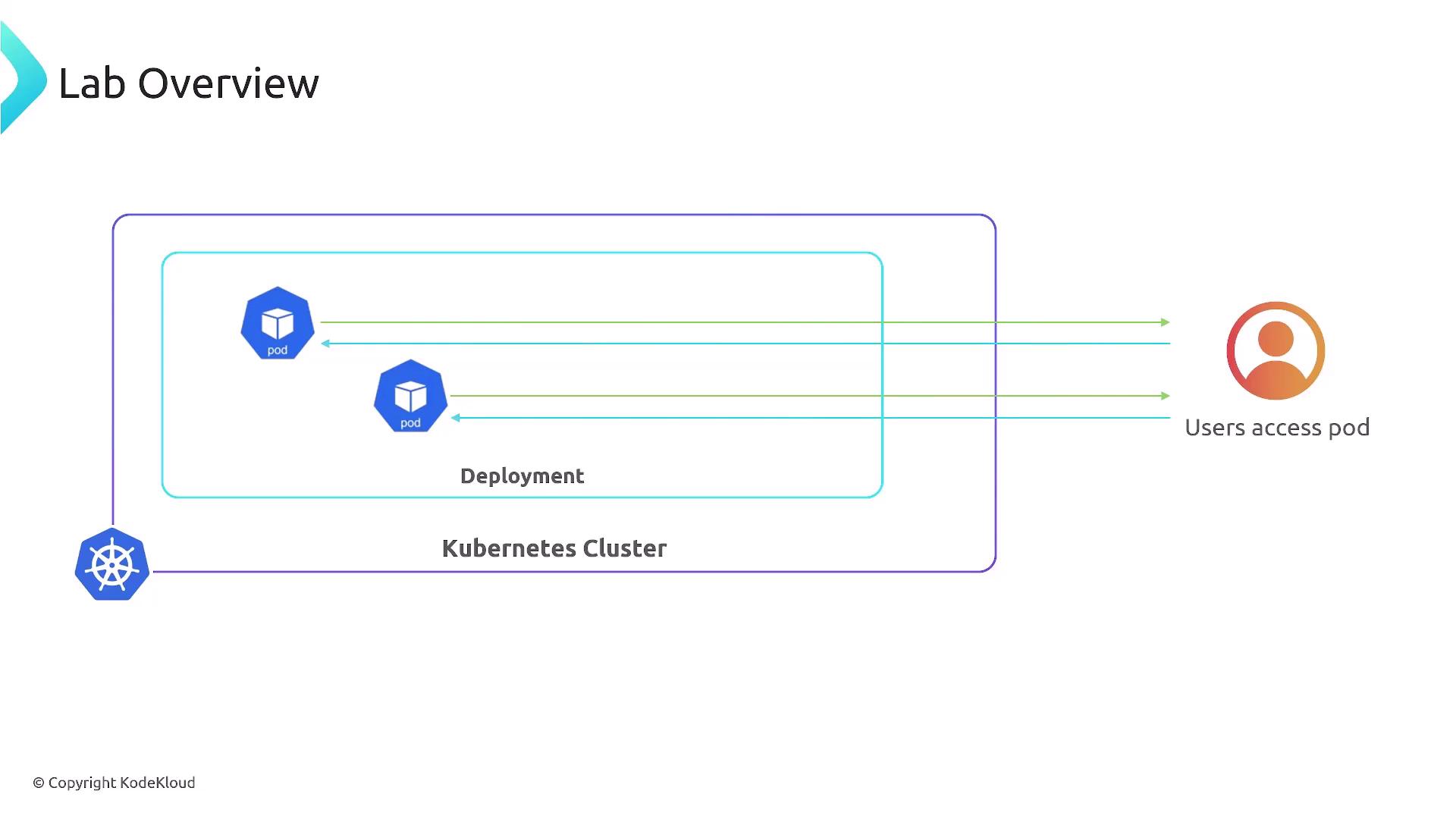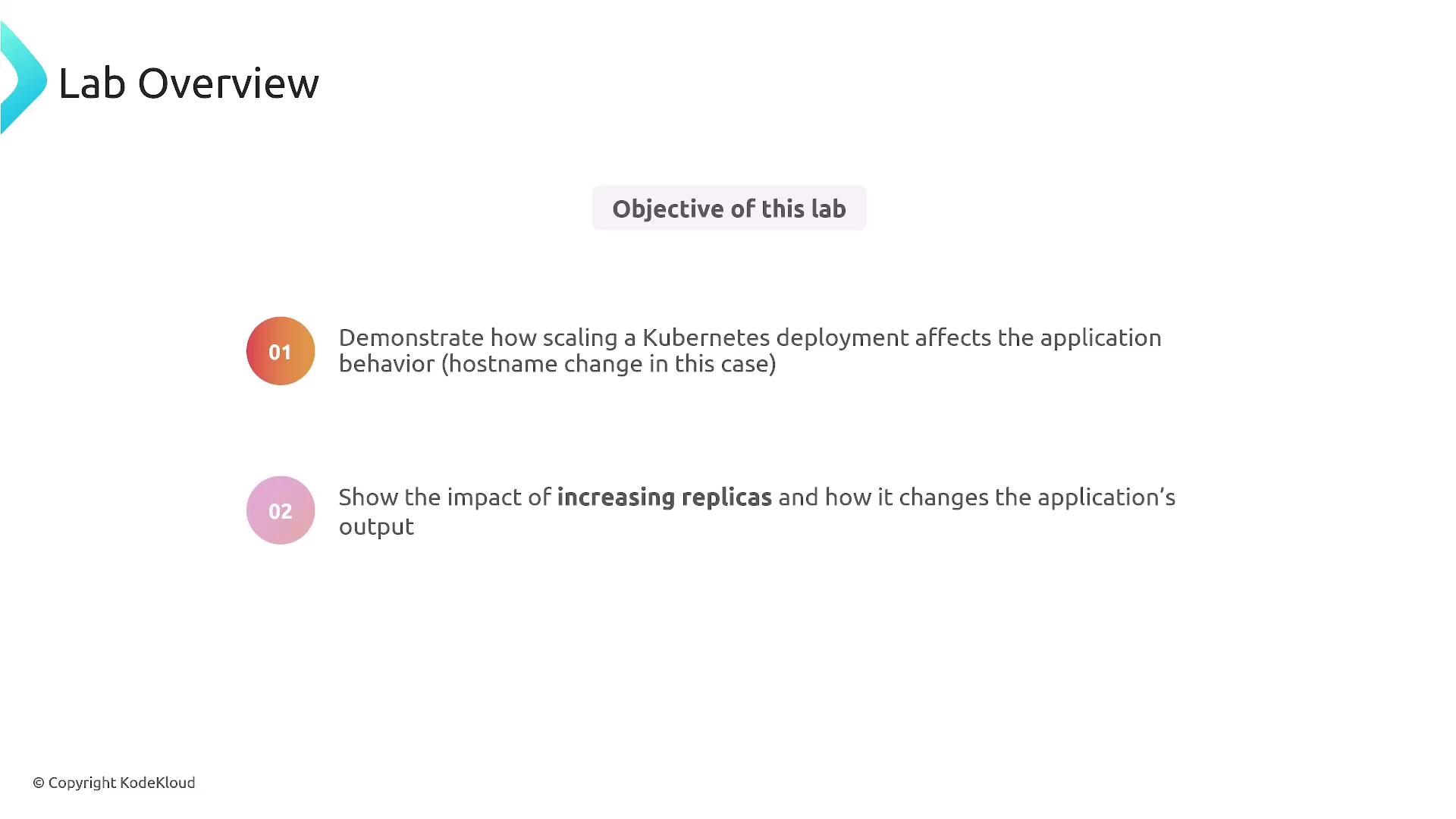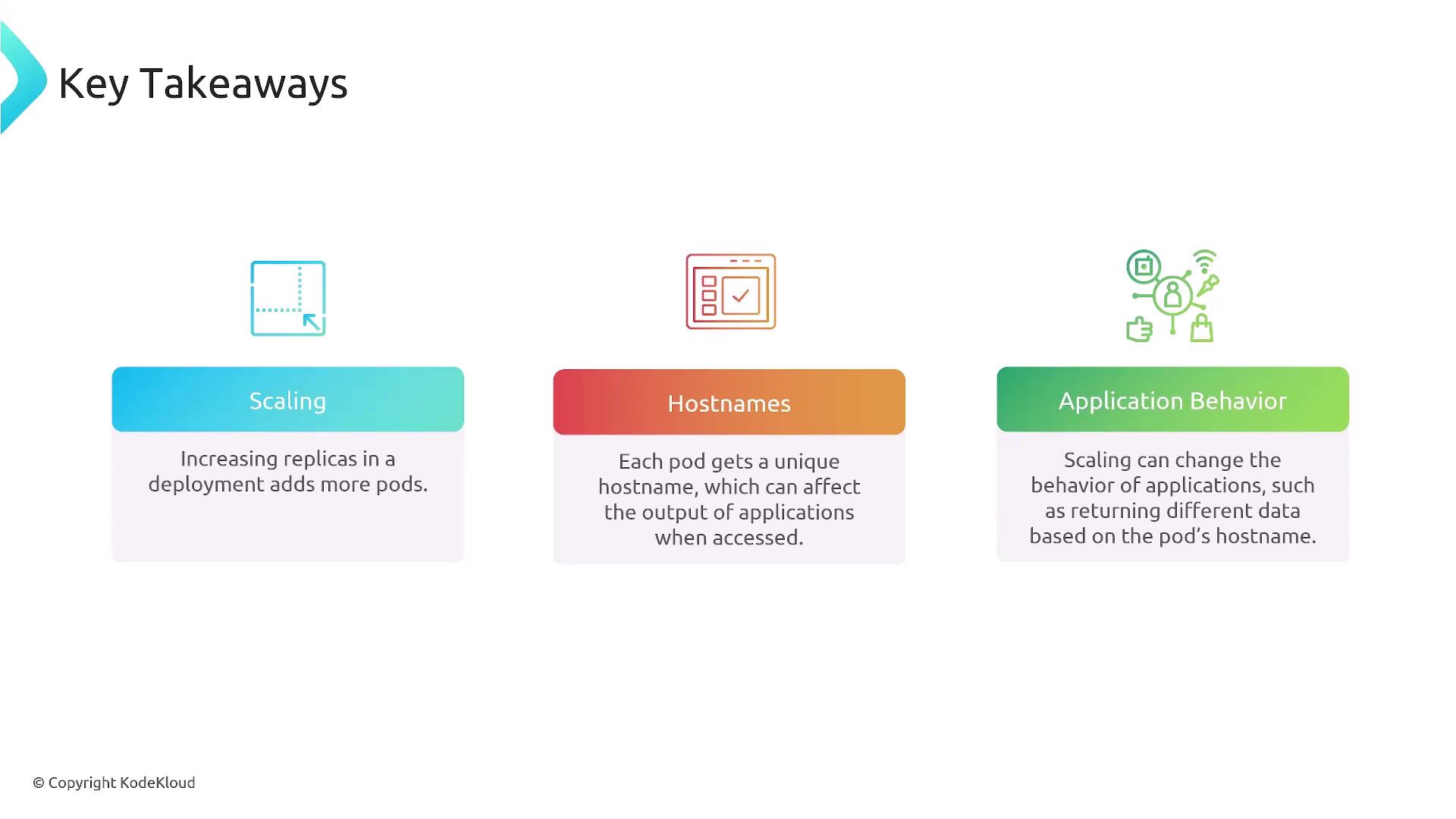Kubernetes Autoscaling
Manual Scaling
Manual HPA
In this lesson, you’ll learn how to manually adjust the replica count of a Kubernetes Deployment to see how pod creation, hostnames, and application behavior change. This manual process lays the groundwork for understanding the Horizontal Pod Autoscaler.
High-Level Architecture
Imagine your Kubernetes cluster as a growing city:
- Deployments are neighborhoods.
- Pods are individual houses.
- Applications run inside those houses, serving end users.

Lab Objectives
In this hands-on lab, you will:
- Scale a Deployment up and down by changing its replica count.
- Observe how each pod receives a unique hostname.
- Understand the effects of replication on application throughput and identity.

Prerequisites
Ensure you have a running Kubernetes cluster and kubectl configured to interact with it.
Demonstrating Manual Scaling
1. Scale the Deployment
Run the following command to increase replicas to three:
kubectl scale deployment flask-web-app --replicas=3
2. Verify the New Pods
List the pods and confirm there are three running instances:
kubectl get pods
Expected output:
NAME READY STATUS RESTARTS AGE
flask-web-app-59d5f5df85-4pvbq 1/1 Running 0 2m12s
flask-web-app-59d5f5df85-f4ktj 1/1 Running 0 111s
flask-web-app-59d5f5df85-sc6jq 1/1 Running 0 2m12s
Each pod now has a unique hostname that changes whenever pods are replaced.
3. Common Commands
| Command | Description |
|---|---|
kubectl scale deployment ... --replicas | Adjusts the number of pod replicas. |
kubectl get pods | Lists all pods with status and age. |
Ephemeral Hostnames
Pods are ephemeral. Their hostnames and IPs can change on restart or rescheduling. For stable network IDs, consider using a StatefulSet.
Key Takeaways

- Manually scaling a Deployment is like adding or removing houses in a neighborhood.
- Each pod gets its own hostname; they’re not preserved across restarts.
- More replicas boost capacity but can affect apps that rely on host-specific data.
- For stateful applications, use StatefulSets or external storage to maintain stable identities.
Next Steps
You’ve now seen how manual replica changes work under the hood. Next, we’ll automate this process using the Horizontal Pod Autoscaler to dynamically adjust pod counts based on CPU or memory metrics.
References
Watch Video
Watch video content
Practice Lab
Practice lab